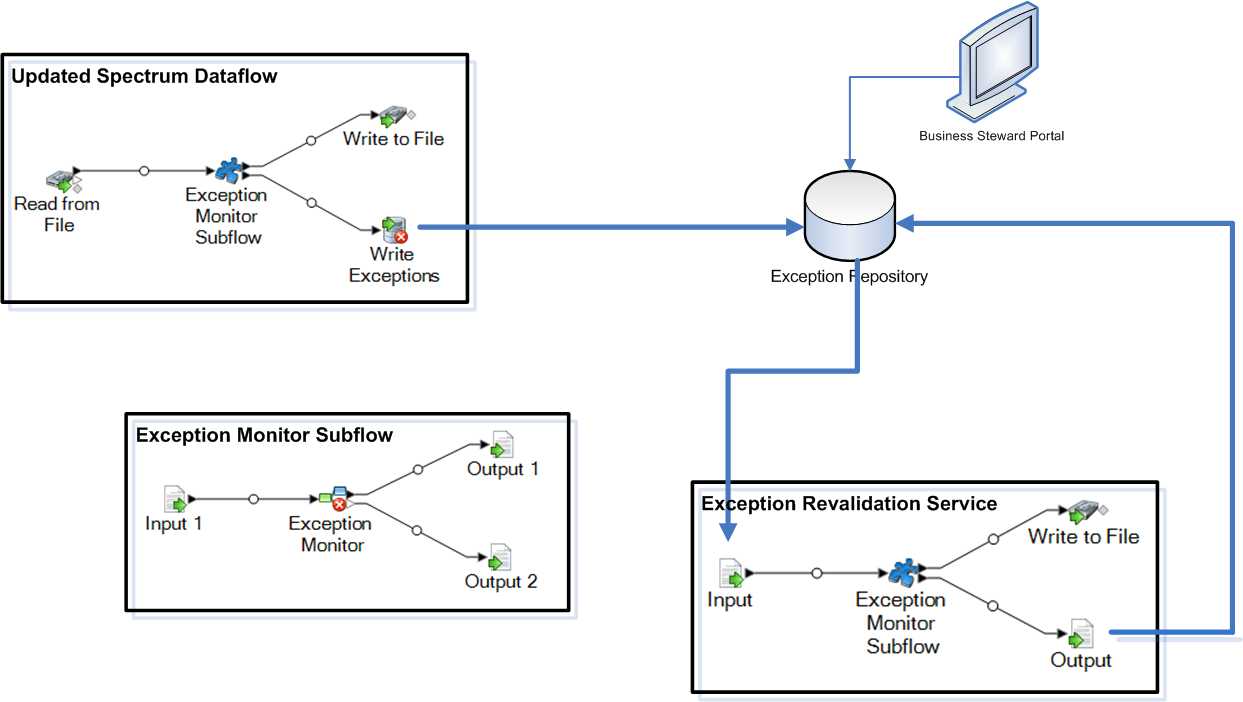Designing a Dataflow for Real-Time Revalidation
If you are using exception management in your dataflow, you can use the revalidation feature to rerun exception records through the validation process after they have been corrected in the Data Stewardship Portal. This enables you to determine if the change you made causes the record to process successfully in a real-time manner. You do not need to wait until the Read Exceptions batch job runs again to see the result.
- A job or a service that reuses or contains an exposed subflow. It must also contain an input source, the subflow stage that processes the input, a Write Exceptions stage, and an output sink for successfully processed records.
- An exposed subflow containing an Exception Monitor stage that points to a revalidation service and is configured for revalidation, including designating whether revalidated records should be reprocessed or approved.
- An exposed service that also reuses or contains the exposed subflow. It processes records that were edited, saved, and sent for revalidation in the Data Stewardship Portal.
Here is an example scenario that helps illustrate a revalidation implementation:

The exception revalidation service that you designated when configuring the Exception Monitor stage is called when you edit one or more records from the exception repository on the Data Stewardship Portal Editor page and click Save. Like the job, the service contains the exception monitor subflow that uses the same business logic to reprocess the records. If the records fail one or more conditions set in the Exception Monitor stage, the exceptions will be updated in the repository. If the records pass the conditions set in the Exception Monitor stage, one of two actions will occur, depending on the selection made for Action after revalidation:
- Reprocess records
- Records will be deleted from the repository and reprocessed.
- Resolve records
- The approved records are retained in the repository and their status changed to Resolved.
To step through the procedure, see Create a real-time validation scenario.